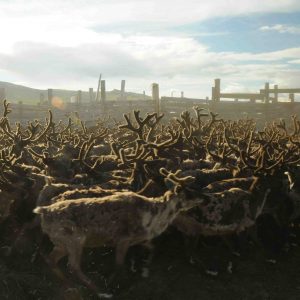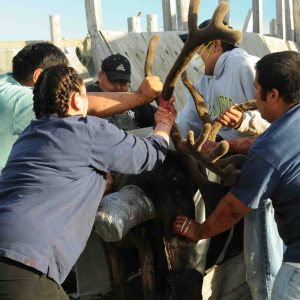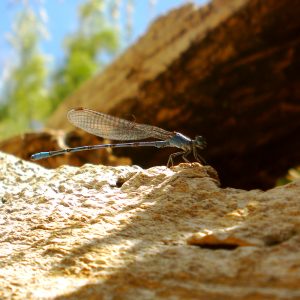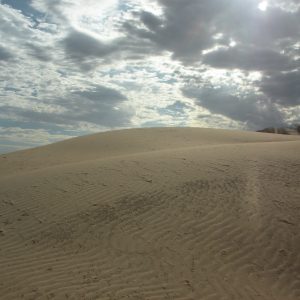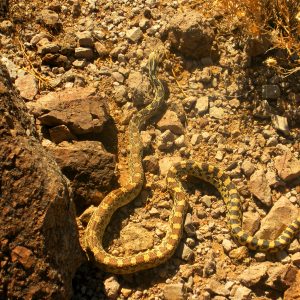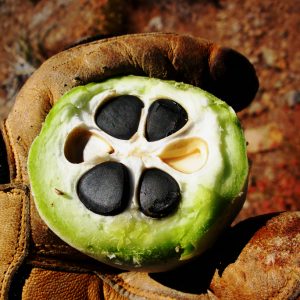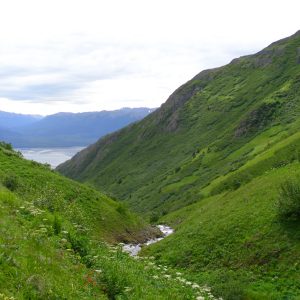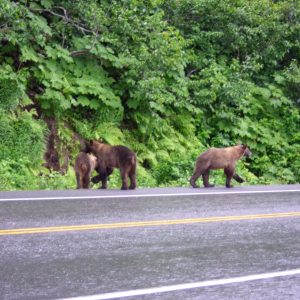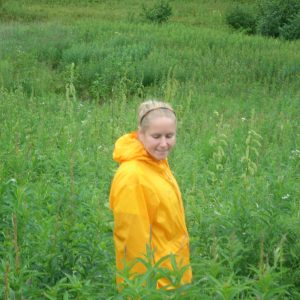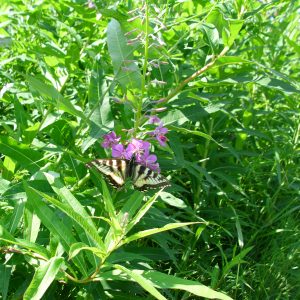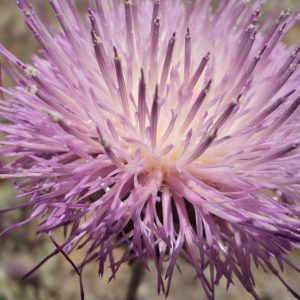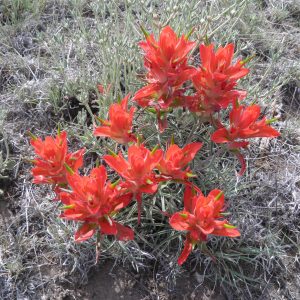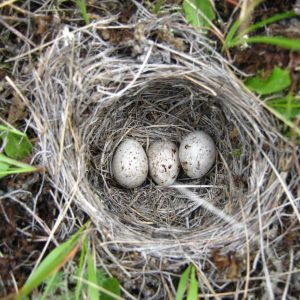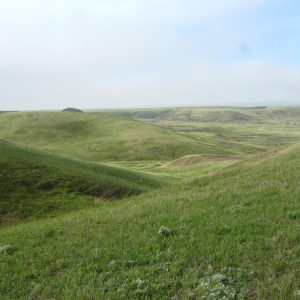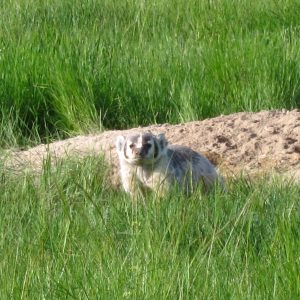July 8th
Today, this morning, we finished handling the Davis herd. The process is one not easily put to words but I will try to recount as best I can most of what it involves. It started weeks ago when we fixed the corral. I thought some of the repairs to be over kill but some proved insufficient. We then went out searching for deer to start pushing towards the corral. Just getting the animals into the corral takes a weeks work, little rest, and mile after mile of rough and wet tundra. But eventually and not without trouble we filled the corral.
It’s amazing to see these animals up close. A few of the boasted large fingered racks, still covered in velvet. Large shovels grew out from one or both sides to form a plate between the eyes. Being so close you could hear grunts and heavy breaths. They are just loosing their winter hair. Large clumps lay on the ground and hung off their side. The deer circled, not stopping, moving like water in a whirlpool. Antlers clicked and clanked together with a light rain-stick sound.
It was now 8:00 pm. I had changed out my wet boots and socks, eaten some sandwiches and sausage and cheese, the sun was high and I was eager to work. The process of getting just one deer through the corral processed is not easy. The herd but first be split, a large group going into the “barge”, and then three smaller pockets funnel down to two squeeze chutes with a team at each. At 8:30 we moved the first group through the barge and loaded the pockets and the first deer began to move through the chutes. Here’s how it goes:
There’s a door at the end of the chute that connects it to the last pocket where there are maybe 12-15 deer waiting. And the deer don’t wait calmly. They churn and swirl, jump 10 feet high and smash the walls of the pockets. Any loose wood comes off, deer try to squeeze through the slot between the doors, people are calling for deer, hair is flying, deer and coming-its a rodeo. One deer at a time is pushed through the door and enters the first part of the chute. There’s a small floor to walk on with diagonal walls coming up. Deer don’t walk one foot in front of the other so having little room to walk on slows them down. At the end of this there is a squeeze chute and a small mass of people. As the deer are ushered down the ramp to the awaiting party they moved slowly and tentatively. Then, usually just as they get to the end they bolt and someone, typically three people, have to be there to wrestle them and hold them down and close the chute. The chute doesn’t hold them, it still take two to prevent an escape. After a few dozen you get a groove. I learned that If I grab the near antler and hook the nose with my forearm and pull the deer’s head towards me and then back holding it by the lower jaw it’ll arrest it quickly. Once controlled the deer, in our case, is sexed, notched in the ears, tagged with an ID number, weighted, vaccinated, dewormed, bled, occasionally dehorned and collared. The whole process goes very quickly when orchestrated well, though not when the animal is kicking and jumping about. We would castrate a few of the mavericks, which involves releasing the deer from the chute while one person, me, holds the antlers and head and as soon as it’s clear, throwing it to the ground and holding it there as someone, Greg, makes two slits and removes the testicles. Then the trick is to get up before the deer does, not always easy. This went on all night, holding deer, fixing collars, calling out “maverick female” meaning a female that hasn’t been processed before, or “Davis bull,” a bull that already has a tag and notched ears. Everyone’s got a job, clipping antlers and rubber banding the stumps to stop the bleeding, writing notes and data recording, counting the deer released. The rodeo continued, two chutes working quickly to get the deer in and out. The whole Davis family was there, more excited than usual as the herd hadn’t been handled in five years. It was a homecoming of sorts, high spirits and laughter, jokes always at someone’s expense. The sun rolled across the sky moving west to north and slowly stepping down. It was still warm but not hot when we reached our grove, people tired, less laughter, work became a chore and then labor, but the sun kept us awake and working, not to mention the hundreds of deer to go. At sun set, at 1:15 am, it wasn’t near the halfway mark.
Animals continued to come, hair flew everywhere, blood and grit and grime covered every hand and face and shirt, pain increased or just continued. Energy reduced talk to just what’s necessary, the night continued. Every deer that comes through and more so with the ones that fight hard or have to be taken to the ground tolls you body what feels like years. Fingers, knees, feet, hands take a beating hour after hour. Fawns were moved with the rest of the deer until the last pocket and then moved into a separate processing area. I don’t know what went on in there, other than now and then one would mistakenly come through the chute and I’d pick it up and carry in into the pen and have one of the kids straddle it until someone could tag and weight it. Everyone did his or her part. The sun rose and still we worked, taking blood and vaccinating and collaring. Pausing only to dry our hands of saliva and blood before the next deer came through. Now and then, maybe four times through the night we would take short breaks while the pockets were refilled. Some would get food or go to the bathroom or fall asleep. It didn’t do much to help exhaustion. Then the last of the deer were loaded into the pockets. One more big push and that might be it. On we went. The same for every deer but not every deer was the same. As the morning gained a footing the deer got more anxious to join the rest in freedom and would move more quickly down the chute and hit my body harder as they came to a stop. The largest ones came last as they had been able to avoid the first loadings. The last fifty or so took tremendous effort to restrain and process. At last it was the last deer. Same as the rest, no easier. And it was off, 452 deer, it was 8:30 am.
I fell asleep on the truck ride home. Every joint and muscle had been beaten. I had been kicked and bucked and now bruised and in so much aching pain. I was limping and holding my arms in each other. My hands had been pummeled by antlers and teeth, they were bloody, covered in saliva and grime. My clothes destroyed. I washed myself, surveyed cuts and bruises and assessed each limb. Finally I slept, just enough to recharge for my softball game and regain a normal schedule. It’ll take at least a few days to undo last night’s destruction, though it’s likely I’ll handle again within a week. But that was done and the gargantuan effort was well worth it. Each scar meant the job had been done and the Davis herd was once again in business.
Note:
Sure enough a week and a half later I was off to another handling. This one was done a bit different and with a whole lot more deer. Briefly: there was only one chute, the corral was in terrible condition, and instead of 450 deer there were about 1500. It’s hard to say exactly because the wind and rain picked up so much in the middle of the night we went to take a break and part of the corral blew down and after only 500 deer the rest of the herd escaped. Instead of sending one deer down the cute and having it arrive at a squeeze chute they sent three at once and three guys would each grab one and half ride half wrestle it to the ground. It went more quickly but was much more tiring. We didn’t have to process them the same way either, just tag and cut the antlers and let them up. It made for faster work but it was a miserable night.
Photos: http://picasaweb.google.com/bacoppvi/Alaska?feat=directlink



